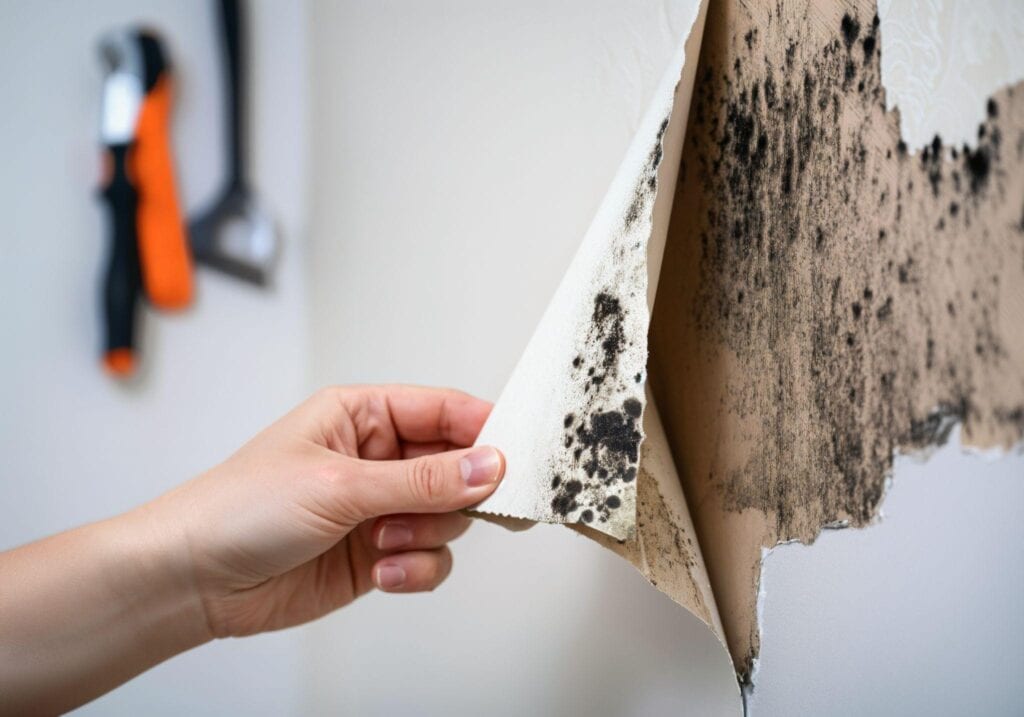Wallpaper is a timeless way to enhance interior design by adding texture, color, and personality to a space. However, when moisture enters the equation, wallpaper can develop unsightly bubbles, begin peeling at the edges, or even experience mold growth behind its surface.
Homeowners and interior designers alike must understand how moisture impacts wallpaper and what steps can be taken to prevent damage.
How Moisture Affects Wallpaper
Wallpaper relies on adhesive to stay firmly in place, but moisture weakens the bond between the wallpaper and the wall surface. High humidity, condensation, or water leaks can cause the adhesive to soften or break down, resulting in bubbling, peeling, or warping over time.
- In porous walls (such as drywall and plaster), moisture can seep through, disrupting adhesion from behind the wallpaper.
- In non-porous walls (such as sealed surfaces), condensation may form, creating a damp layer that weakens the adhesive.
Common Signs of Moisture Damage
Wallpaper damage caused by moisture often presents itself in different ways. Some early warning signs include:
- Wallpaper bubbles forming under the surface
- Peeling edges or seams that begin to lift away from the wall
- Discoloration or mold growth appearing beneath or around wallpaper
- A musty odor, indicating hidden moisture behind the wallpaper
Ignoring these issues can lead to further deterioration, so it’s important to identify and address moisture-related problems before they escalate.
Sources of Moisture That Impact Wallpaper
Knowing where moisture originates is key to preventing damage. The most common sources include:
- High Humidity Levels – Rooms with excessive moisture, such as bathrooms and kitchens, often experience wallpaper adhesion issues.
- Water Leaks – Undetected plumbing leaks, roof leaks, or faulty window seals can introduce moisture behind the wallpaper.
- Condensation – When warm, humid air meets a cooler wall surface, condensation forms, leading to gradual moisture buildup behind wallpaper.
To protect wallpaper in these environments, it’s essential to implement moisture control strategies and choose the right materials during installation.
Preventing Wallpaper Damage in Humid Environments
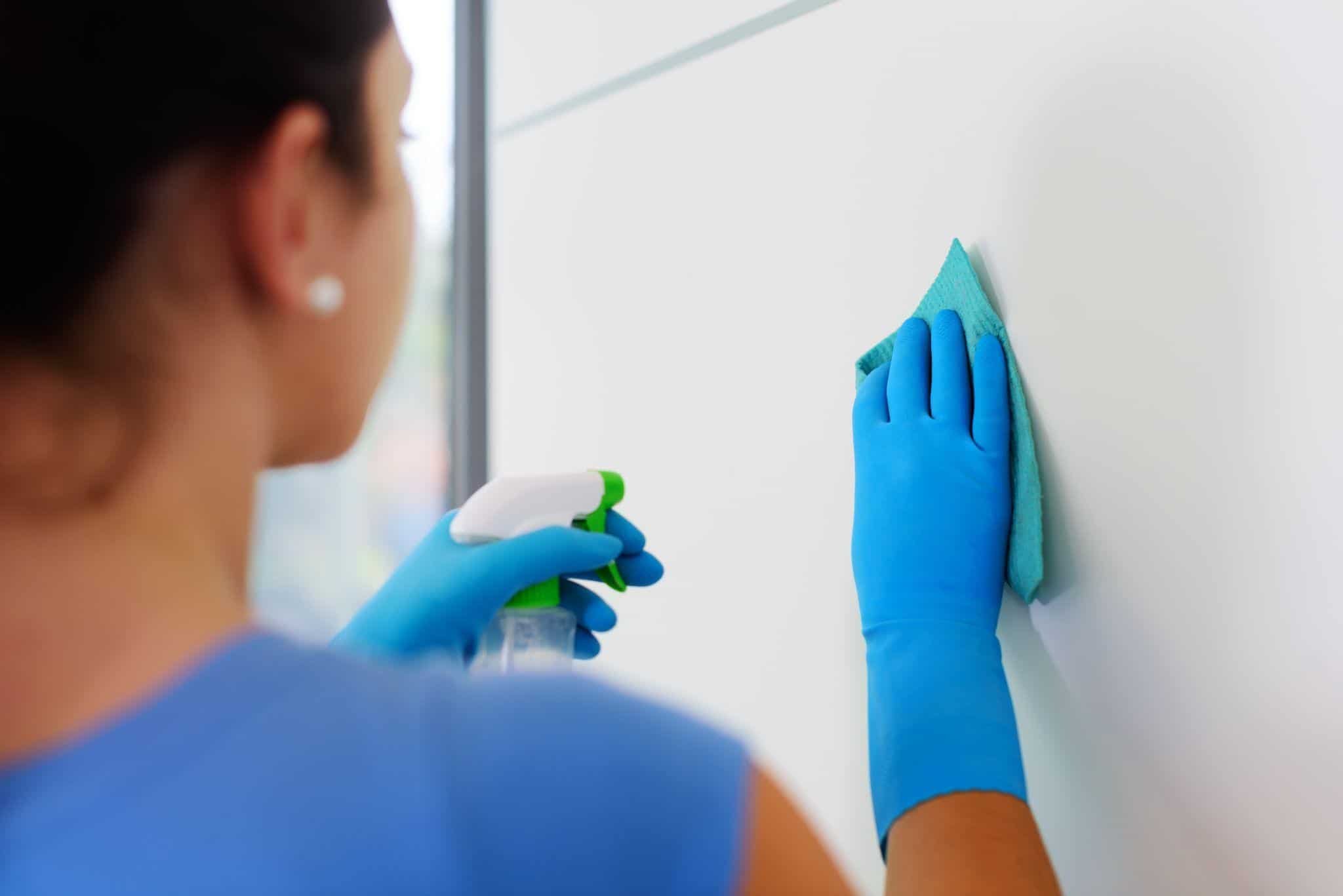
One of the most effective ways to prevent damage to wallpaper is ensuring that walls are properly prepped before application.
- Clean the walls thoroughly – Remove dust, grease, and debris to allow for maximum adhesive bonding.
- Check for moisture issues – Use a moisture meter to detect excess humidity within the walls before installing wallpaper.
- Apply a moisture-resistant primer – A high-quality primer creates a protective barrier, preventing moisture from seeping through and weakening the adhesive.
Ventilation Strategies to Control Moisture
Proper airflow is vital when installing wallpaper for high-moisture areas like bathrooms and kitchens.
- Use exhaust fans – Installing or upgrading ventilation systems in humid rooms helps remove excess moisture from the air.
- Maintain indoor humidity levels – Aim for 40-50% humidity using a dehumidifier to prevent wallpaper from peeling or bubbling.
- Encourage airflow – Keep windows open when possible and ensure proper circulation with ceiling or portable fans.
Choosing the Right Wallpaper for Humid Areas
Selecting moisture-resistant wallpaper is essential in areas prone to humidity.
- Vinyl Wallpaper – Ideal for bathrooms and kitchens, as it resists moisture and is easy to clean.
- Non-Woven Wallpaper – More breathable than traditional paper wallpaper, reducing the risk of trapped moisture and mold growth.
- Textile and Paper Wallpapers – Not recommended for humid spaces unless sealed with a protective coating.
Fixing Bubbling and Peeling Wallpaper
Even with the best preventive measures, moisture can sometimes damage wallpaper and cause it to bubble or peel. If you notice these issues, addressing them quickly can prevent further damage.
How to Get Bubbles Out of Wallpaper
Wallpaper bubbles occur when moisture weakens the adhesive bond, trapping air or water underneath. Here’s how to fix them:
- Identify the Type of Bubble
- Air bubbles – Typically caused by improper smoothing during installation.
- Water bubbles – Occur when moisture is trapped between the wallpaper and the wall.
- Fix Small Wallpaper Bubbles
- Use a sharp utility knife to make a small slit in the center of the wallpaper bubble.
- Gently lift the edges and apply a small amount of wallpaper adhesive underneath using a fine brush or syringe.
- Smooth the wallpaper with a roller or a damp sponge, pressing from the center outward to remove trapped air.
- Fix Large or Multiple Bubbles
- If bubbles cover a large area, peeling off and reapplying the wallpaper may be necessary.
- Remove the affected section carefully and apply fresh adhesive before smoothing it back into place.
How to Fix Wallpaper That Is Peeling
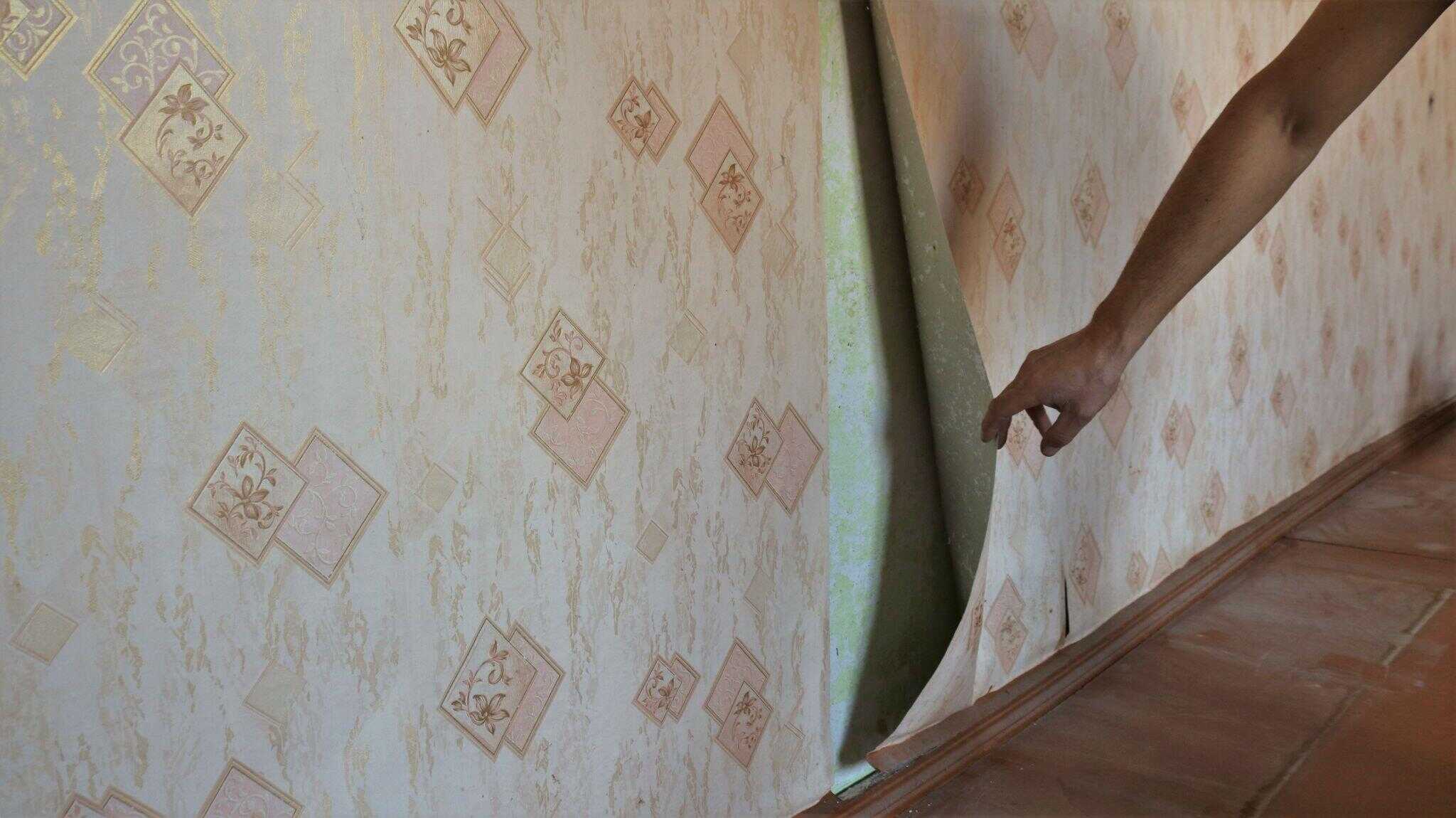
If the edges or seams of the wallpaper begin to lift, follow these steps to restore adhesion:
- Apply Adhesive – Gently lift the peeling section and apply wallpaper paste or adhesive underneath using a brush.
- Press and Secure – Use a wallpaper roller or seam roller to press the wallpaper back into place, ensuring a strong bond.
- Wipe Away Excess Adhesive – Clean off any visible adhesive with a damp cloth to prevent staining.
When to Replace Wallpaper
If moisture has caused extensive mold growth, discoloration, or water damage behind the wallpaper, removal and replacement may be the best option. Be sure to address the source of moisture before applying new wallpaper to prevent recurring issues.
Why ROMAN Products Are the Best Solution for Moisture Control
When it comes to wallpaper adhesives and primers that withstand humid conditions, using high-quality, moisture-resistant solutions is essential. ROMAN offers a range of products designed to prevent wallpaper bubbles, peeling, and other moisture-related issues. These products include:
PRO-555 Extreme Tack Adhesive
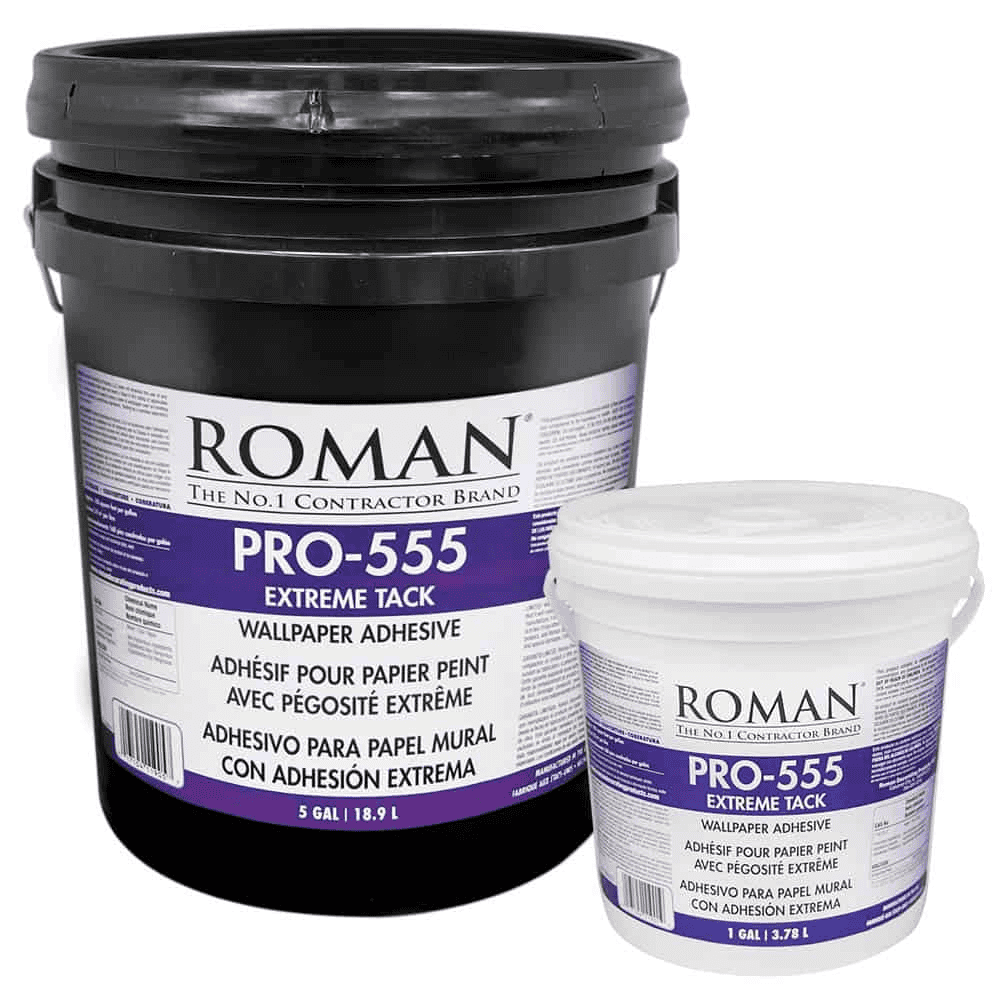
Best for: Applying vinyl wallcoverings in humid or moisture-prone areas.
Key Features:
- Very high tack for excellent hold.
- Ideal for applying borders, borders-over-wallpaper, and specialty materials.
- High moisture resistance ensures strong adhesion even in high-humidity conditions.
ECO-788 Clay-Based Adhesive
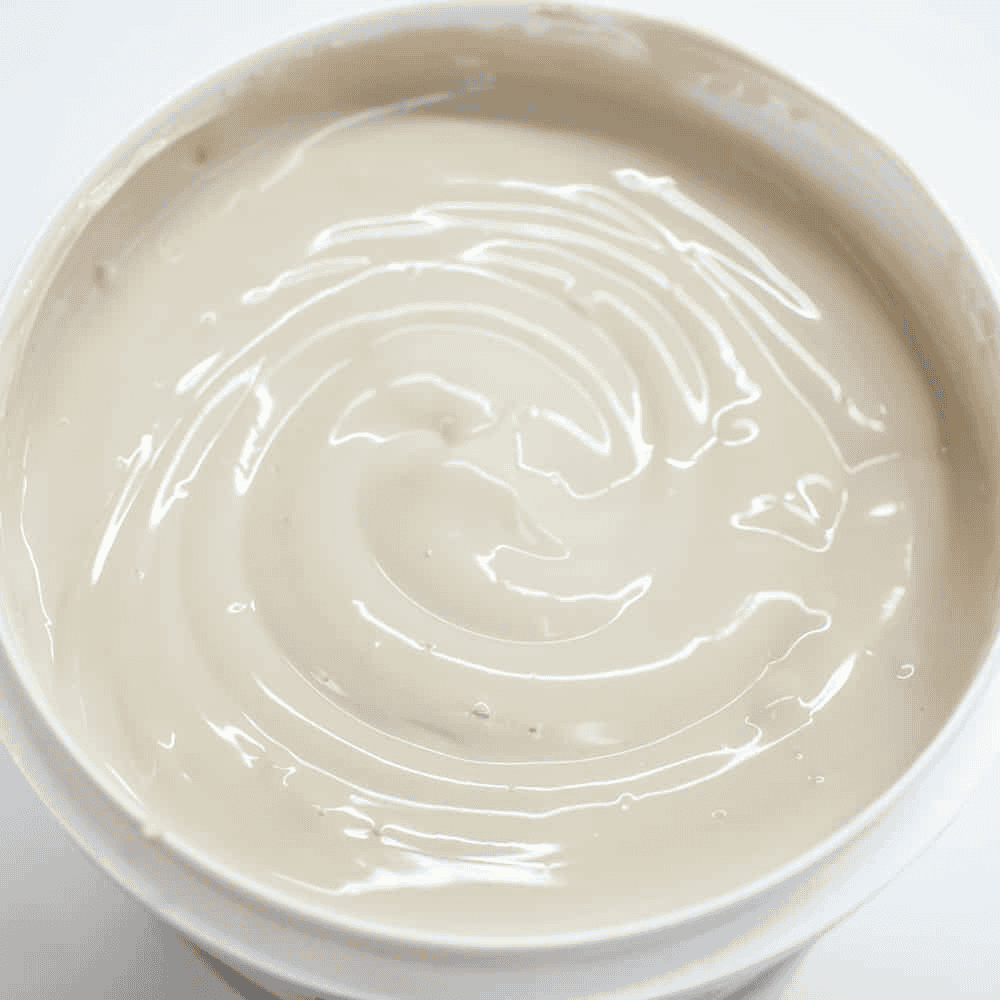
Best for: Eco-conscious projects requiring a high-solids adhesive with excellent performance in damp environments.
Key Features:
- Clay-based formula with low VOC content.
- Excellent open time and slip for easier positioning.
- Suitable for most types of medium- to commercial-weight wallcoverings, especially where moisture control and sustainability are essential.
PRO-999 Rx-35 Sealer/Primer
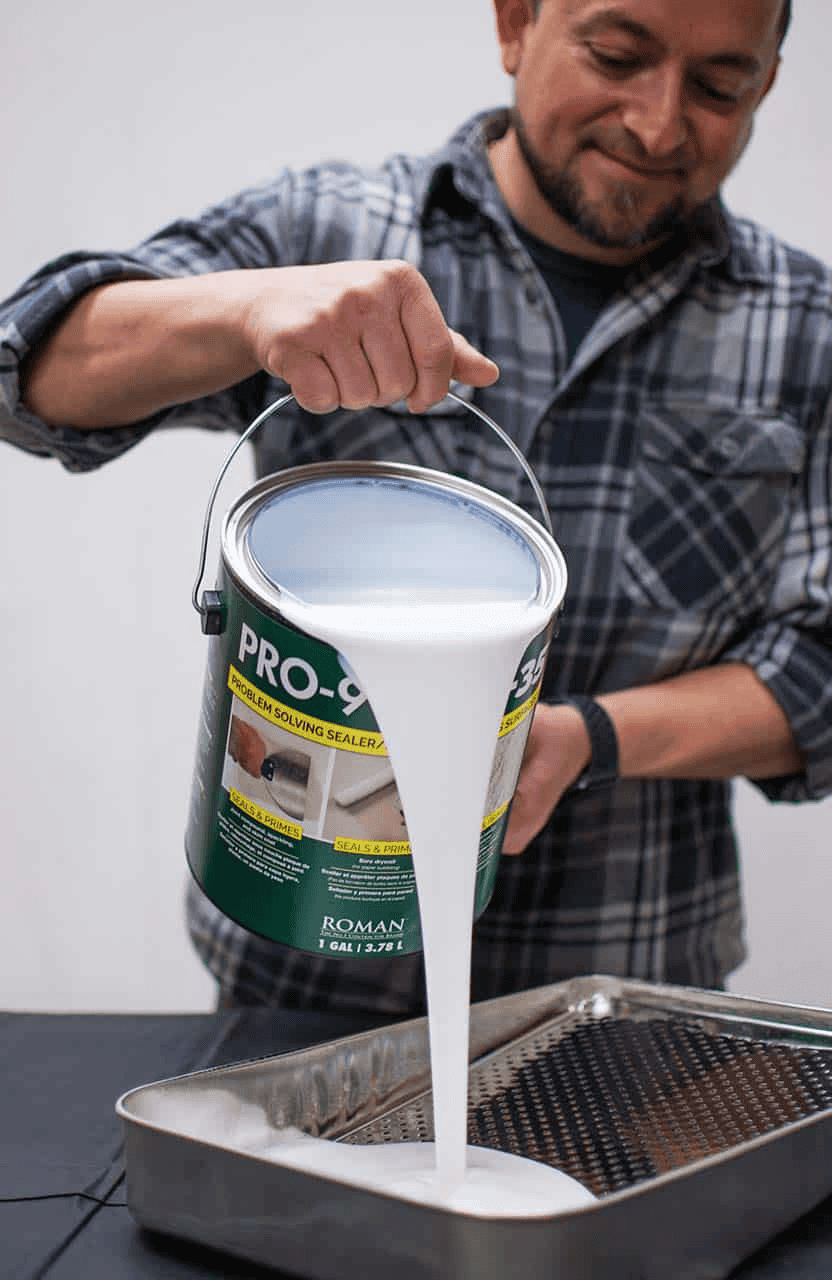
Best for: Sealing porous walls and creating a moisture-resistant surface before wallpaper installation.
Key Features:
- Strengthens compromised or damaged surfaces to enhance wallpaper adhesion.
- Penetrates and seals drywall, joint compound, and latex-painted walls.
- Ideal for preventing moisture from weakening the wallpaper adhesive over time.
ROMAN: Trusted by Professionals and Homeowners Alike
Our wallcovering products, widely used in both residential and commercial settings, provide long-lasting performance in even the most challenging conditions. No matter where you hang wallpaper, using ROMAN’s damage-resistant adhesives and primers can make all the difference.

